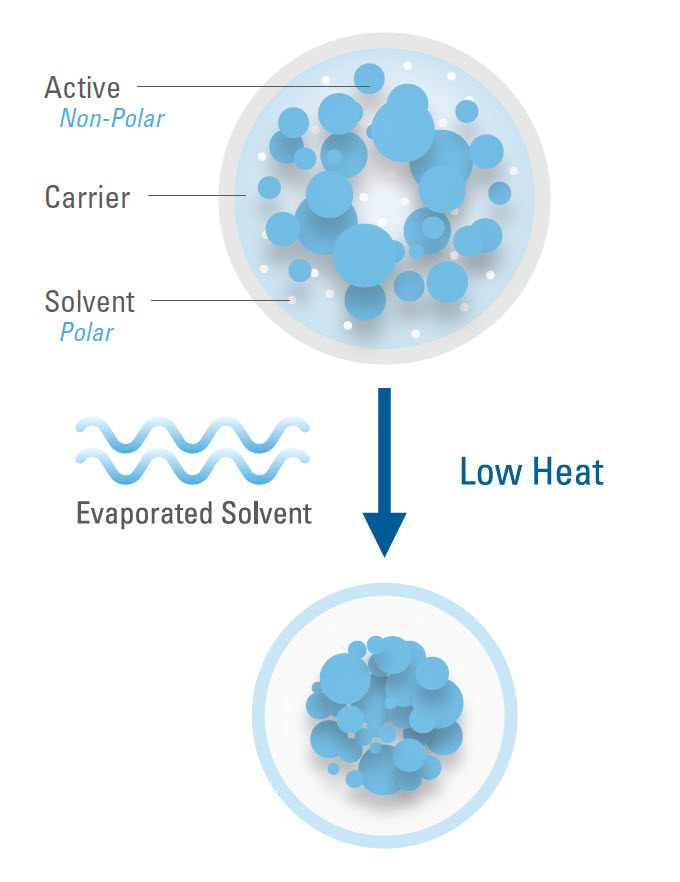Case Study
PROCESSING MICROALGAE WITH ELECTROSTATIC SPRAY DRYING
Readying Microalgae for Commercial Use Requires Drying
Microalgae, also known as phytoplankton, is used in a host of commercial applications, from health supplements to pharmaceuticals and food. Drying harvested microalgae is time-consuming and more difficult than agricultural crop dehydration.
The long drying time results in large drying costs. Microalgae can be easily degraded by high temperatures during manufacturing. It also has low storage stability and can undergo oxidative degradation triggered by light, temperature, and/or extreme pH in the presence of oxygen.

Liquid feeds of microalgae should be dried to:
• Increase shelf life and ensure stability during storage
• Preserve and protect unstable pigments
• Prevent oxidation and denaturation of the products
• Mask odors.
Challenges with Conventional Dryers
Processing microalgae with conventional spray dryers is challenging due to the use of high temperatures and the use of air as a drying gas since this combination can quickly degrade the active ingredients and preserved pigments.
Freeze drying is another method used to prepare microalgae for commercial applications, but this process is also challenging due to the need for batch processing, as well as high energy and time consumption required.
Fluid Air conducted a study on two types of microalgae: Nannochloropsis oceanica and Phaeodactylum tricornutum, to compare conventional spray drying and freeze drying to electrostatic spray drying. Download this free case study to review the results.
.png?h=75&mh=150&w=358&hash=36844D2DB3DBD3A749E8E7C5AF4A49AA)